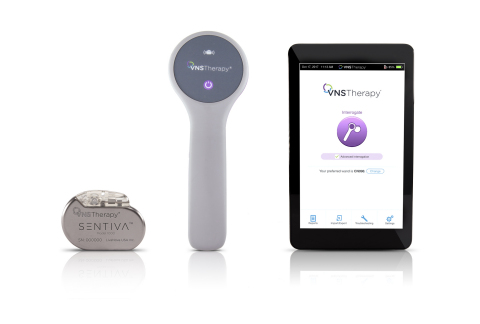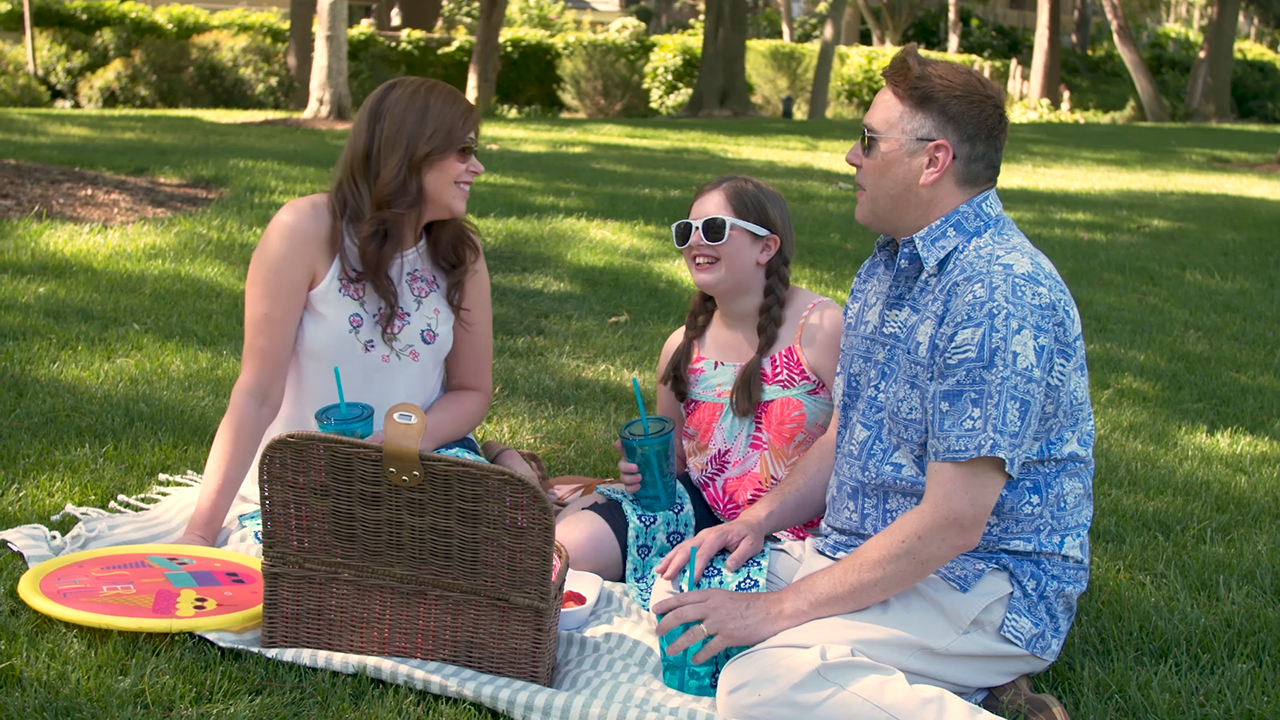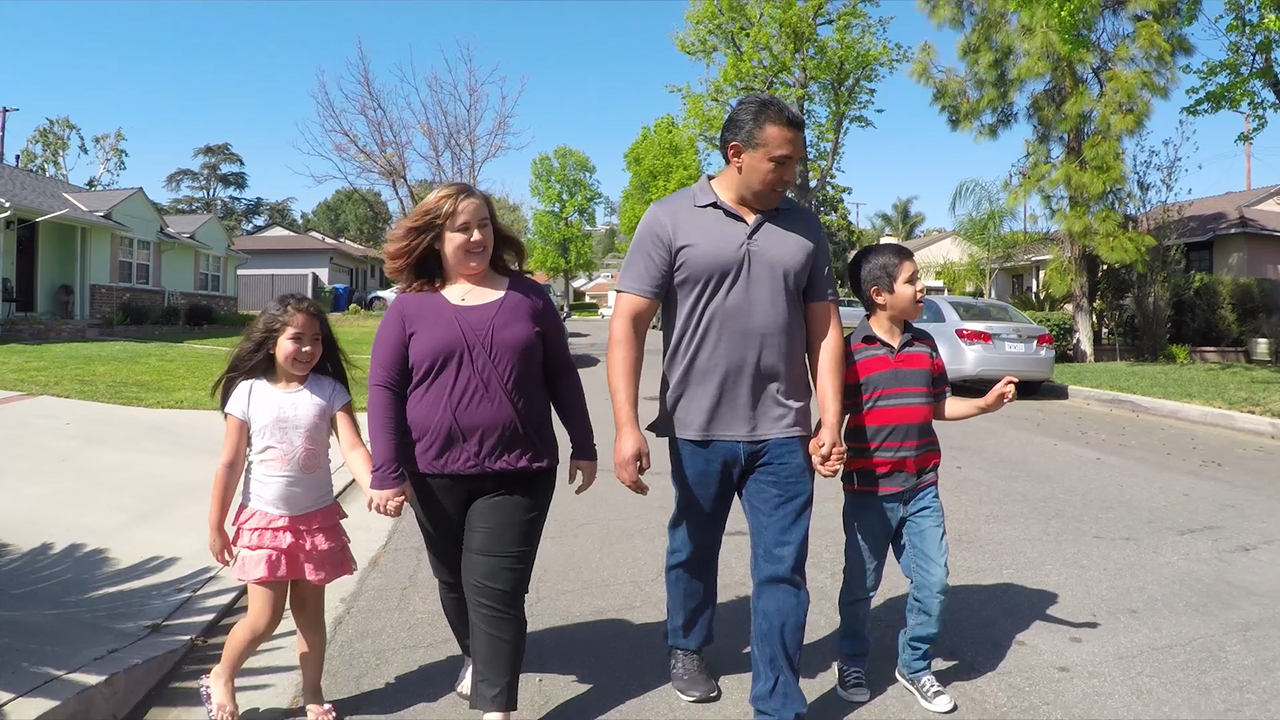LONDON--(BUSINESS WIRE)--LivaNova PLC (NASDAQ:LIVN) (“LivaNova” or the “Company”), a market-leading medical technology company, today announced it received U.S. Food and Drug Administration (“FDA”) approvals for its latest Vagus Nerve Stimulation Therapy® (“VNS Therapy”) System, which consists of the SenTiva™ implantable generator and the next-generation VNS Therapy Programming System for the treatment of patients with drug-resistant epilepsy. SenTiva is the smallest and lightest responsive therapy for epilepsy. The new VNS Therapy Programming System features a wireless wand and new user interface on a small tablet. Together, the components offer patients with drug-resistant epilepsy a physician-directed customizable therapy with smart technology and proven results to reduce the number of seizures, lessen the duration of seizures and enable a faster recovery.
“We created SenTiva and the accompanying VNS Therapy Programming System based on feedback received from patients and physicians to ensure ease of use, better patient care and cost effectiveness,” said Jason Richey, LivaNova’s President of North America and General Manager of the Neuromodulation business franchise. “In addition, SenTiva’s compact size allows for a more comfortable experience for pediatric patients, which is beneficial now that VNS Therapy is the first and only system that is FDA approved for drug-resistant epilepsy in children as young as four years of age.”
SenTiva is the first epilepsy device of its size to include detect-and-respond mode, designed to prevent seizures before they start and automatically deliver extra therapy to stop them if they do. SenTiva also collects and logs events commonly associated with seizures, including a patient’s body position and heart rate variations.
The VNS Therapy Programming System is compatible not only with SenTiva, but with all LivaNova legacy VNS Therapy generators, allowing physicians to use the system with numerous patients. When combined with SenTiva’s technology, the new system provides several advanced options and personalized features, including:
- Guided programming – Advanced technology allows physicians to quickly and confidently deliver treatment with one touch.
- Scheduled programming – Physicians can safely program multiple therapeutic steps during one office visit; the generator will then gradually and automatically increase therapy without the need for the patient to return to the physician. Scheduled programming can be very helpful, since many patients with epilepsy are not able to drive. This feature may also allow the patient to achieve a therapeutic range sooner.
- Day and night programming – Physicians have unrivaled flexibility to customize therapy when their patients need it at specific times, day or night.
“Since every patient suffering from seizures is different, we need more treatment options. SenTiva and the VNS Therapy Programming System will provide that additional flexibility and customization for our patients,” said Dr. James Wheless, Professor and Chief of Pediatric Neurology of Le Bonheur Children’s Hospital in Memphis, Tenn. “SenTiva is especially ideal for our pediatric patients. With VNS Therapy’s recently expanded age range, many more children living with drug-resistant seizures will have the opportunity for treatment beyond medication. Studies show that earlier use of VNS Therapy is proven to offer better long-term outcomes for children at a critical time in their development.”1,2,3
About VNS Therapy for Epilepsy
VNS Therapy is the first and only FDA-approved device for drug-resistant epilepsy that is clinically proven safe and effective for adults and children as young as four years of age. VNS Therapy is designed to prevent seizures before they occur and stop them if they do. It is a unique treatment approach developed specifically for people with drug-resistant epilepsy — a condition that affects one in three people with epilepsy. For more information, visit VNSTherapy.com or SeizureControl.com.
INTENDED USE/INDICATIONS – UNITED STATES
The VNS Therapy System is indicated for use as an adjunctive therapy in reducing the frequency of seizures in patients four years of age and older with partial onset seizures that are refractory to antiepileptic medications.
Individual results may vary. Common side effects include hoarseness or changes in voice tone, prickling feeling in the skin, shortness of breath, sore throat and coughing. Visit www.VNSTherapy.com/important-safety-information to view safety and full prescribing information.
|
1. |
Renfroe JB, Wheless JW. Earlier use of adjunctive vagus nerve stimulation therapy for refractory epilepsy. Neurology. 2002;59(6 Suppl 4):S26-30. |
||
|
2. |
Berg AT, Zelko FA, Levy SR, Testa FM. Age at onset of epilepsy, pharmacoresistance, and cognitive outcomes: a prospective cohort study. Neurology. 2012;79(13):1384-91. |
||
|
3. |
Otsuki T, Kim HD, Luan G, et al. Surgical versus medical treatment for children with epileptic encephalopathy in infancy and early childhood: Results of an international multicenter cohort study in Far-East Asia (the FACE study). Brain Dev. 2016;38(5):449-60. |
||
About LivaNova
LivaNova PLC is a global medical technology company built on nearly five decades of experience and a relentless commitment to improve the lives of patients around the world. LivaNova’s advanced technologies and breakthrough treatments provide meaningful solutions for the benefit of patients, healthcare professionals and healthcare systems. Headquartered in London and with a presence in more than 100 countries worldwide, the company employs more than 4,500 employees. LivaNova operates as three business franchises: Cardiac Surgery, Neuromodulation and Cardiac Rhythm Management, with operating headquarters in Mirandola (Italy), Houston (U.S.A.) and Clamart (France), respectively.
For more information, please visit www.livanova.com.
Safe Harbor Statement
This press release contains forward-looking statements within the meaning of Section 27A of the Securities Act of 1933, as amended and Section 21E of the Securities Exchange Act of 1934, as amended. These statements can be identified by the use of forward-looking terminology, including "may," "believe," "will," "expect," "anticipate," "estimate," "plan," "intend," "forecast," or other similar words. Statements contained in this press release are based on information presently available to us and assumptions that we believe to be reasonable. We are not assuming any duty to update this information if those facts change or if we no longer believe the assumptions to be reasonable. Investors are cautioned that all such statements involve risks and uncertainties. Important factors that may cause actual results to differ include, but are not limited to: continued market acceptance of the VNS Therapy System and sales of our products; adverse changes in coverage or reimbursement amounts by the Centers for Medicare & Medicaid Services, state Medicaid agencies and private insurers; the presence or absence of intellectual property protection and potential patent infringement claims; maintaining compliance with government regulations; product liability claims and potential litigation; reliance on single suppliers and manufacturers for certain components; the accuracy of management's estimates of future expenses and sales; and other risks detailed from time to time in our filings with the Securities and Exchange Commission ("SEC"). For a detailed discussion of these and other cautionary statements, please refer to our most recent filings with the SEC, including our Annual Report on Form 10-K for the year ended December 31, 2016, and our Quarterly Report on Form 10-Q for the quarter ended June 30, 2017.







